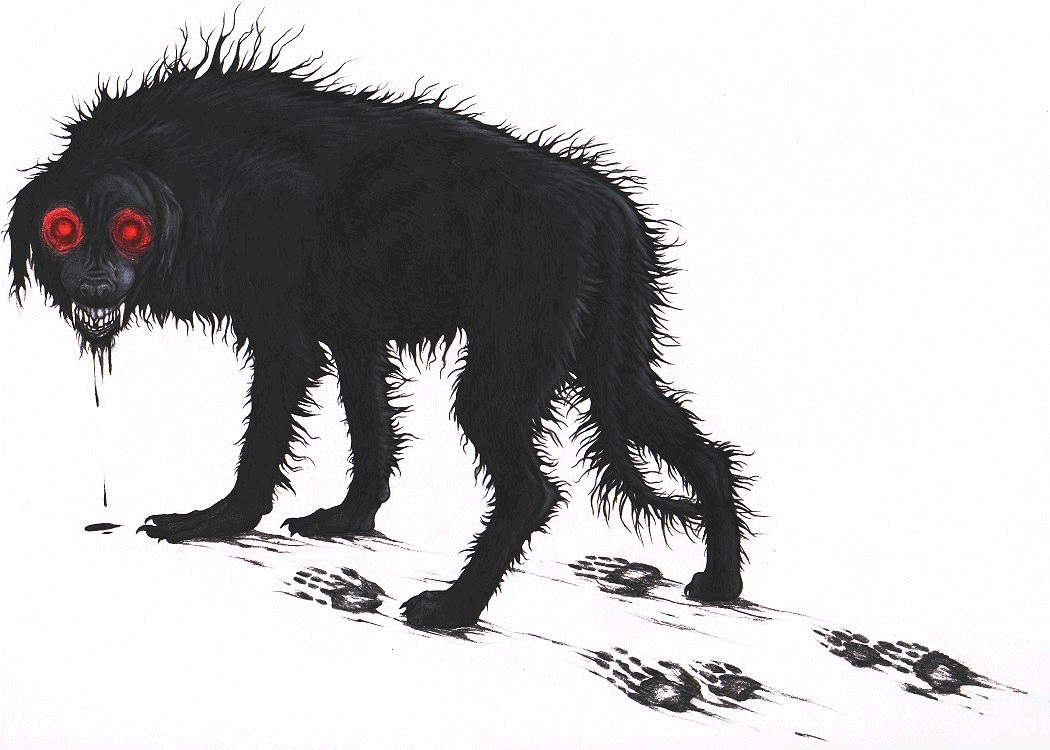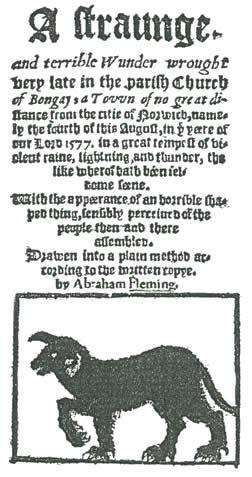
The Black ShuckThe Black Shuck, and creatures like it, have been seen all across England throughout the middle ages. Places like Suffolk, Norfolk, East Anglia, Lancashire, Yorkshire, Staffordshire, and Leicestershire have all had accounts of such a beast: a dark or pure black mangy dog, generally very large, although accounts strongly vary in size. For instance, in County Durham we have the Barghest, which in some accounts perfectly matches this description. Accounts vary between the Black Shuck having a pair of searing red eyes, or a single large eye like a cyclops. 
In 1901 W. A. Dutt, an author and journalist of the wildlife and topography of East Anglia, gave us this description of a cyclops wolf. He also explains that the origin of the Black Shuck may be from old Scandinavian myth of the black hound of Odin, brought to Old England by the Vikings who settled along the Norfolk coast. The Black Shuck is known to prowl about in the dead of night, along dark lanes and rural footpaths, and is primarily seen along the coastline and roadsides, or dwelling in graveyards, dark forests, or beside lakes. His footsteps make not a sound, but his howl chills to the very bone. Originally, seeing or hearing the Black Shuck is often considered an omen of death or illness; either of the person (very immediately) or close relatives (with some delay). However, in more recent accounts since the 19th century there have been tales of the Black Shuck being far more benign -- for instance, accompanying and protecting women travelling home at night, or helping lost travellers to find their way home. Descriptions of the Black Shuck, including its haunting howls, seem to tie in to the common myth found across northern Europe since the 12th century of "The Wild Hunt." This tells of a ghostly band of hunters that fly through the cold night sky, bringing with them that same cold, howling wind. The Wild Hunt was practically synonymous with winter, and great winter storms. These hunting groups often travelled with dogs. In a way, folklore tales such as this serve a valuable lesson in safety. Being out at night in cold and harsh conditions could easily mean death, and tales such as this would remind people to keep themselves warm and safe from the elements. |
Places to read about the Black ShuckWikipedia, AllThatsInteresting, Myths and Folklore Wiki And here is an article about the Wild Hunt from mythology.net. Tales of the Black Shuck
My ThoughtsIt's really interesting how creatures from folklore can change overtime into different things in different places like this, if it is true it came from the vikings of course. Which is very likely in my opinion. |

